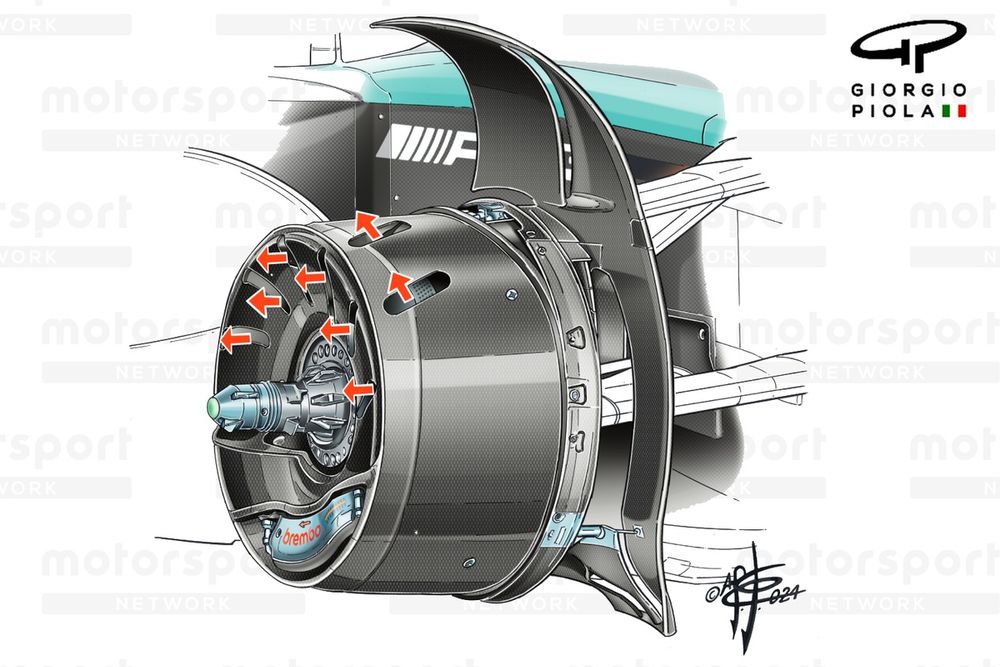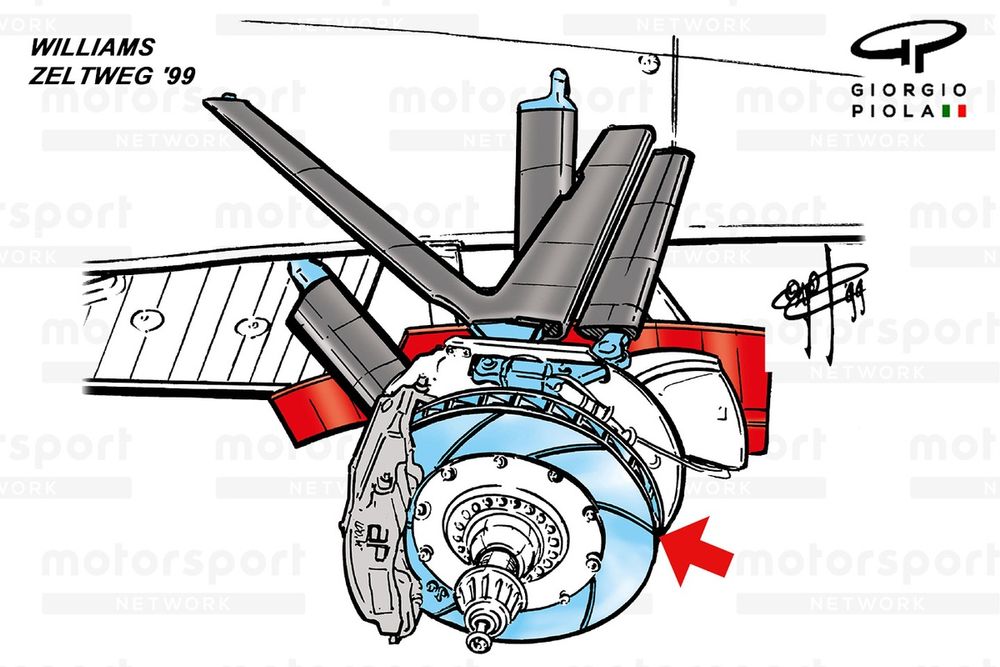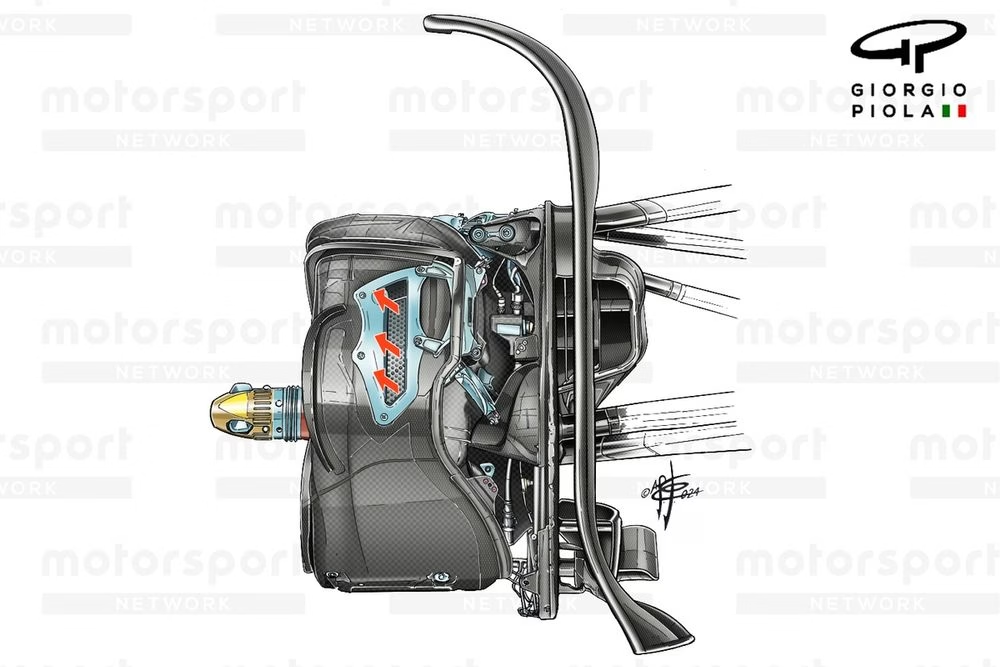As regulations change and evolve, F1 teams find themselves able to find new ways to reincorporate good concepts that worked previously but suddenly lost their edge for one reason or another.
The latest example of this phenomenon is the reintroduction of grooves on the brake disc rotor, with Carbone Industries trialling them at recent races.
Williams conducted some experiments at the Italian Grand Prix, with Alpine also joining the action in Mexico.
While the hope is always of tweaks like this adding some direct instant performance advantages for this year, it is more likely that the designs are focused on field testing solutions in preparation for 2025.
This early sighter will also allow the teams supplied by the French manufacturer, which is over half the grid, ample time to prepare and optimise the rest of the braking system and brake duct design around tailored new solutions from the brake disc supplier.
The differences that could drive different performances from the grooves both now and in the future include the number of grooves, their length, shape and depth.

F1’s switch from 13-inch to 18-inch tyres has resulted in teams having to enlarge the size of the brake drum to match the revised wheel well size.
This requirement has been further ramped up as there were also changes made to prevent the drum and wheels from being used to expel heat and air that could provide an aerodynamic contribution to increasing outwash.
This has resulted in a number of new solutions arising to help move heat and air around the assembly. Both work to provide the necessary assistance to cool components and transfer heat into the tyre via the wheel rim in a way that helps manage tyre temperatures.
The most obvious of these design features is the disc fairing (as seen above on the Red Bull), which has gone through various iterations since the regulations were introduced.
Meanwhile, there’s also a considerable variance in the design of each brake drum assembly, with teams creating a layered nest within the assembly to help direct the air and heat before applying the outer brake drum, which must now be sealed to prevent any secondary aerodynamic effects from being employed.

Williams FW21 brake detail, Austrian GP
Photo by: Giorgio Piola
The primary reason for the reintroduction of grooves on the discs though, which is something we last saw when teams used steel discs, is likely to do with increasing the initial bite that’s…
Click Here to Read the Full Original Article at Autosport.com – Formula 1 – Stories…

